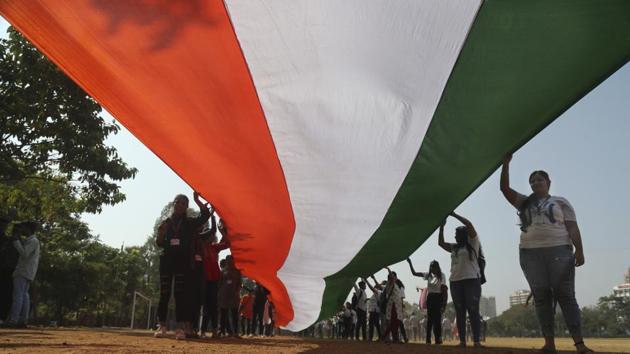The importance of fundamental rights, writes Gautam Bhatia
Liberty, therefore, referred to that zone of freedom guaranteed to the individual where the State’s powers of interference were limited or restricted altogether
[In January 2020, the Hindustan Times marked the 70th year of the Constitution of India with a special series comprising invited columns, essays and archival material. This article has been republished from a curated selection of our coverage to mark Constitution Day.]

Two imperatives shaped India’s freedom struggle. The first was liberation from oppressive colonial rule. The British government was autocratic and repressive, treated Indians as subjects to be ruled rather than equal participants in government, and frequently resorted governing by arbitrary fiat rather than by the rule of law. In response, Indian articulated a vocabulary of civil rights — the freedom of speech, association, and assembly (among others) — that would allow them to express their aspirations, engage in political and cultural dissent, and create a public sphere that would form the basis of self-government.
At the same time, Indians knew they had to look within. The alien regime was not the only repressive institution that existed among them. The twin axes of caste and gender (for example) served to place millions of future citizens in positions of perpetual subordination, exploitation, and exclusion. This subordination, however, also had a long history of resistance. From Jotiba Phule in the late-19th century to BR Ambedkar in the 1920s, a vocabulary of freedom, equality, and access to public spaces was articulated against the specific kind of oppression visited on people by social and cultural institutions.
At the time of the framing of the Indian Constitution — a vision for the future society that we aspired to become and a blueprint of the nation whose borders were soon to come into existence — both these imperatives came together to constitute the Fundamental Rights Chapter, which still remains the beating heart of the Constitution. Drawing upon various constitutional documents that had been written and debated in the run-up to 1947, the framers set out a detailed charter of fundamental rights. The core philosophy underlying this charter was explained by Ambedkar in his last speech to the Constituent Assembly. Highlighting the trinity of liberty, equality, and fraternity that framed the fundamental rights chapter, Ambedkar observed that “liberty cannot be divorced from equality, equality cannot be divorced from liberty. Nor can liberty and equality be divorced from fraternity. Without equality, liberty would produce the supremacy of the few over the many. Equality without liberty would kill individual initiative. Without fraternity, liberty would produce the supremacy of the few over the many. Without fraternity, liberty and equality could not become a natural course of things. It would require a constable to enforce them.”
Liberty, therefore, referred to that zone of freedom guaranteed to the individual, where the State’s powers of interference were limited or restricted altogether. In our Constitution, this liberty is secured by the guarantee of core civil rights, such as the rights to free speech, association, life, personal liberty, and so on. Next, there was equality. As Ambedkar understood, equality was not simply about a guarantee of formal equal treatment (which would only end up entrenching the “supremacy of the few over the many”), but about identifying the bases on which individuals and groups had been historically discriminated against, and to work to remedy that discrimination in the present day. Thus, in the Constitution, we have provisions not only for equal treatment (Article 14) and non-discrimination (Article 15), but also specific enabling provisions for measures like reservation (Article 16), which were never viewed as antithetical to equality, but rather, an integral part of it.
As Ambedkar realised, however, liberty and equality would remain meaningless if they were directed only against the State. The concept of “fraternity” was the bridge between liberty and equality, ensuring that those principles would operate not merely in the “public sphere”, but also — in some respects — in the private sphere. Uniquely for its time, therefore, the Indian Constitution enshrined what we know as “horizontal rights” — i.e., rights between private parties. These included Article 15(2) (guaranteeing non-discriminatory access to certain public spaces such as shops), Article 17 (prohibiting “untouchability”), and Article 23 (prohibiting “forced labour”). The Constitution, thus, intended a deeper democratisation of Indian public and social life, and envisaged that this would be accomplished through the Constitution’s fundamental rights chapter.
Of course, this is not the only part of the story. Perhaps swayed by the violence of Partition — that was going on even as the Constitution was being drafted — the framers ended up hedging in the rights they were granting, with a series of “reasonable restrictions.” There was staunch opposition to this from within the Constituent Assembly — an opposition that reached a fever pitch when it was discovered that there was a proposal to enshrine preventive detention into the Constitution itself. Ultimately, however, these restrictions passed scrutiny and were included into the Constitution. The recent — and repressive — use of a number of laws, however, suggests that the framers may have allowed themselves to get caught up too much in their own time, and failed to provide adequate fundamental rights safeguards for the future.
These few design flaws, however, do not away from the importance of the fundamental rights chapter, and its role in ensuring that India’s Constitution is, at the end of the day, a transformative Constitution: it transforms subjects to citizens, and brings ideas of freedom and equality into spaces they would otherwise never come. The task of future generation is to defend that precious heritage.






